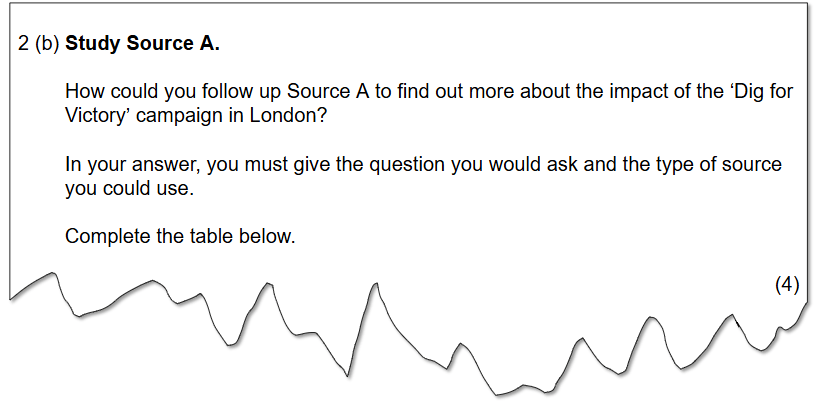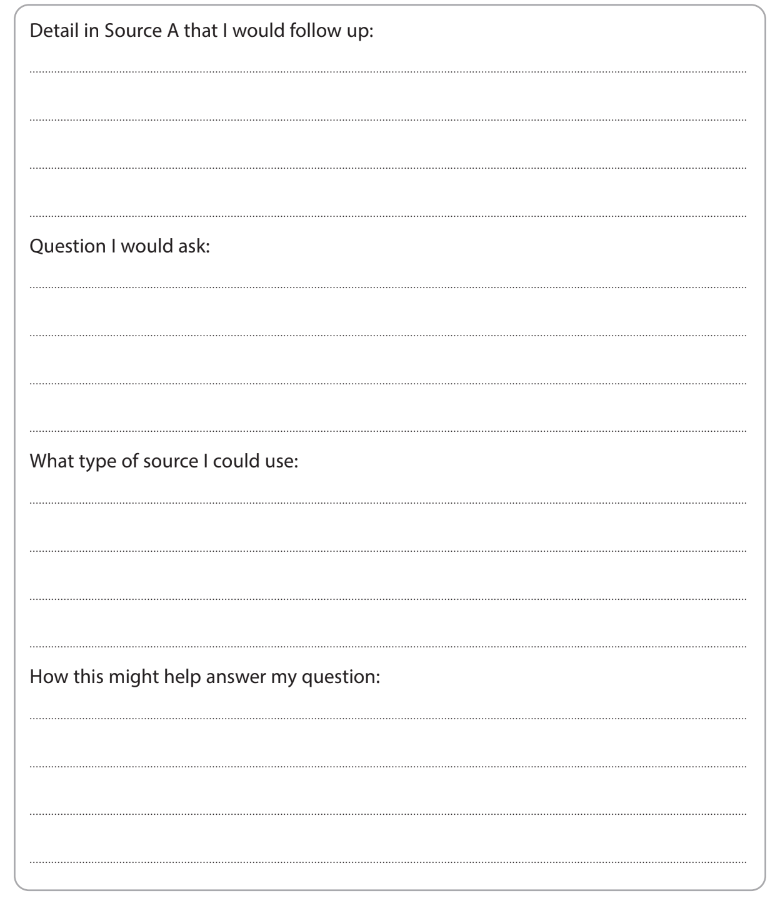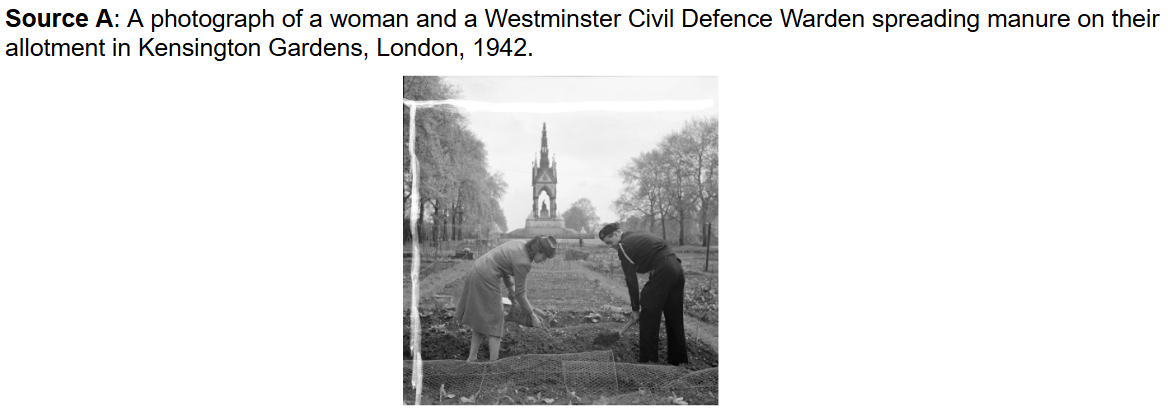The 4 Mark "Follow up" Question (Edexcel GCSE History): Revision Note
Exam code: 1HI0
Summary of Question 2 (b)
Question 2 (b) tests your ability to:
Select relevant content from a source
Ask a useful historical question based on that content
Suggest a suitable follow-up source
Explain how that source would help answer your question
It always builds on one of the sources from Question 2 (a) and is based on the historic environment: London and the Second World War, 1939–45
Amount of marks | 4 |
|---|---|
The time that you should spend on the question | No more than 5 minutes |
An example of the type of question you may encounter can be seen below:

In previous years, this question has focused on the following topics in Warfare in British society:
Year of exam | Question topic |
|---|---|
2018 | The impact of bombing on daily life in London (opens in a new tab) |
2019 | Morale in the East End of London during the Blitz (opens in a new tab) |
2020 | The use of underground air-raid shelters during the Blitz (opens in a new tab) |
2021 | Government control of news reporting about the impact of bombing in London (opens in a new tab) |
2022 | Leisure activities in London during the Second World War (opens in a new tab) |
2023 | The impact of the attack on the docks in East London on ‘Black Saturday’, 7 September 1940 (opens in a new tab) |
2024 | The difficulties in dealing with the effects of German attacks on London |
Key skills required in the "Follow-up" question
The "Follow-up" question is a very different question style to other questions in the Edexcel GCSE History exam
It requires students to have some of the following key historical skills:
Selecting relevant content from a historical source
Creating a relevant historical question
Selecting historical sources to support your chosen historical question
Using the content of a source
The content is the information presented in the source
The content could come from a variety of different types of sources, such as:
A picture
A photograph
An extract from a book
A speech
A political cartoon
A letter
You should use the content of the source in the first section of your answer: "Detail in Source ... that I would follow up"
For a written source, use a quote
For a visual source, describe a section of the image
Asking historical questions
The second section is about the "Question I would ask" regarding the source specified in the question
Your question must:
Link to the detail you have just chosen
Be relevant to the enquiry in the question
Be one question
Be written with a question mark
Selecting relevant sources
In the third section of the table, you will be asked to consider: "What type of source I could use"
In this section, avoid selecting sources such as:
Wikipedia
The Internet
A historian
The same type of source as the source identified in the question
For the example question, you should not follow up Source A with another photograph
Versatile sources to consider are:
Government propaganda posters and leaflets, such as "Dig for Victory"
Mass Observation reports on topics such as morale, air raids and rationing
Personal diaries and letters from London civilians during the Blitz
Photographs of bomb damage, shelters and daily life
Local council records and Civil Defence documents
Newspapers such as The Times or The Mirror
British Pathé and newsreel footage
Parliamentary records and wartime laws
Make your source as specific as possible by:
Including dates or battles
Explaining what it could show
In the final section, “How this might help answer my question”, explain:
What you could learn from your chosen source
How it would help you answer the question you asked in Section 2
How to answer the "Follow-up" question
The "Follow-up" answer space is laid out clearly into four guided sections

Section | What to write |
|---|---|
"Detail in Source ... that I would follow up" | A quote (written) or description (visual) from the source (1) |
"Question I would ask" | One historical question linked to the detail and the enquiry (1) |
"What type of source I could use" | A specific historical source (1) |
"How this might help answer my question" | A clear explanation of how the source would help answer your question (1) |
Sections 1 and 2 are connected
If you do not provide a detail, you will not receive a mark for your question
Sections 3 and 4 are also connected
If you do not select a relevant source, you cannot receive a mark for why that source can help you to answer your historical question
Worked example of a "Follow-up" question
Worked Example
2 (b) Study Source A.
How could you follow up Source A to find out more about the impact of the "Dig for Victory" campaign in London?
In your answer, you must give the question you would ask and the type of source you could use.
Complete the table below.
(4)

Answer:
Detail in Source A that I would follow up: The Civil Defence Warden spreading manure on an allotment. (1)
Question I would ask: How involved were civil defence volunteers in the "Dig for Victory" campaign in London? (1)
What type of source I would look for: A diary written by a Civil Defence volunteer in 1943. (1)
How this might help answer my question: The diary entry could show whether taking part in food growing was a regular part of their wartime duties or just a one-off event, helping me understand how much different parts of society took part in the campaign. (1)

Unlock more, it's free!
Did this page help you?